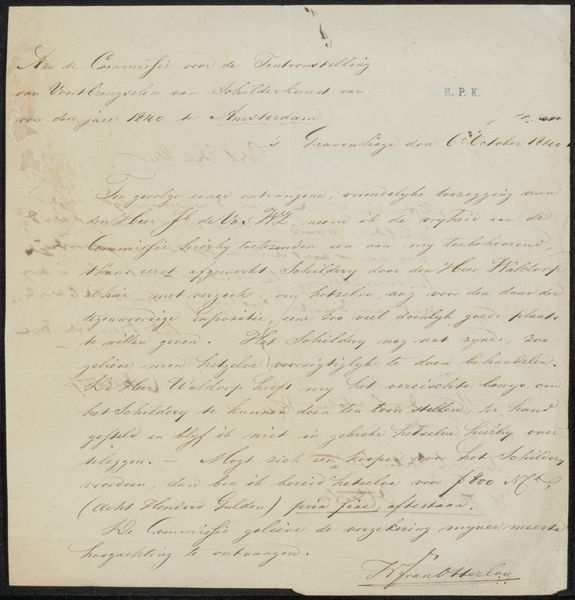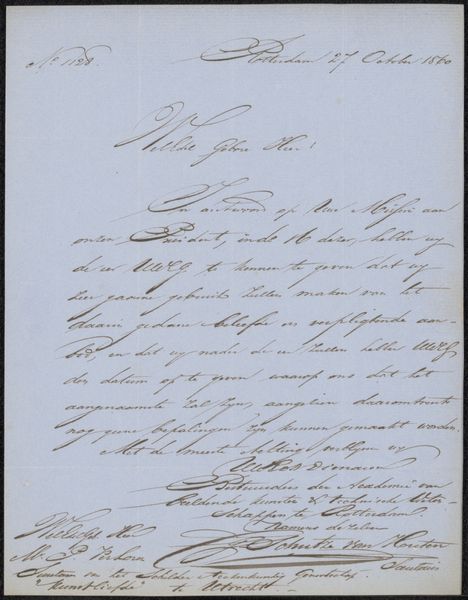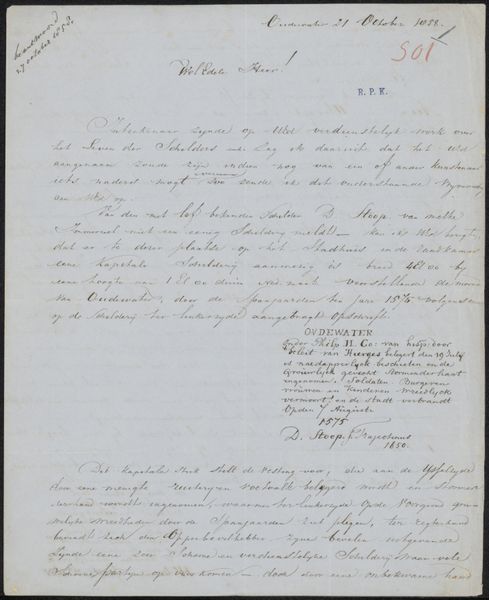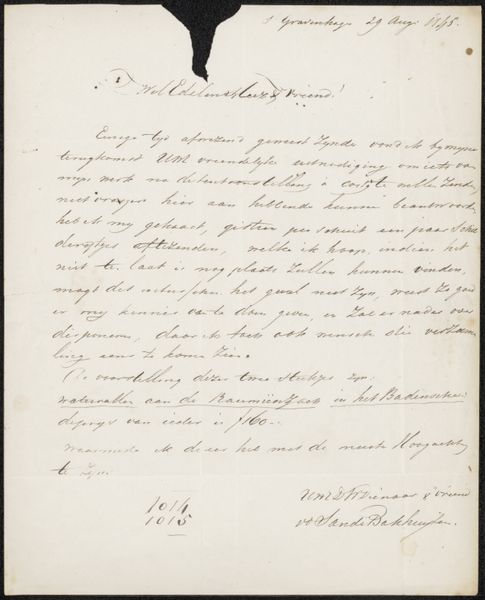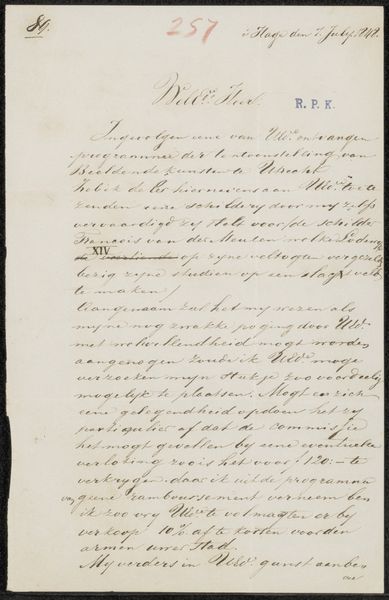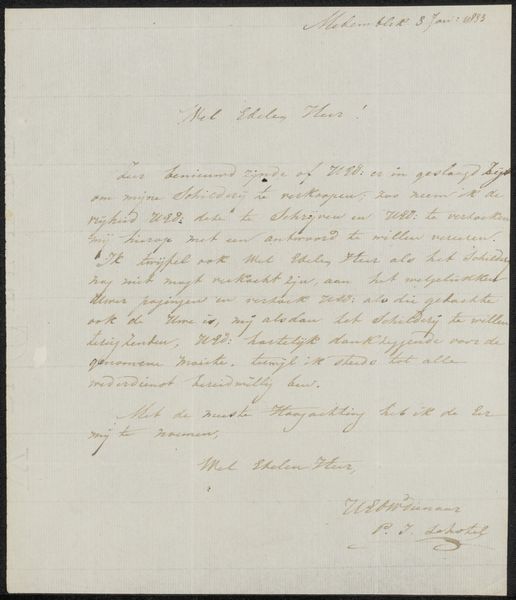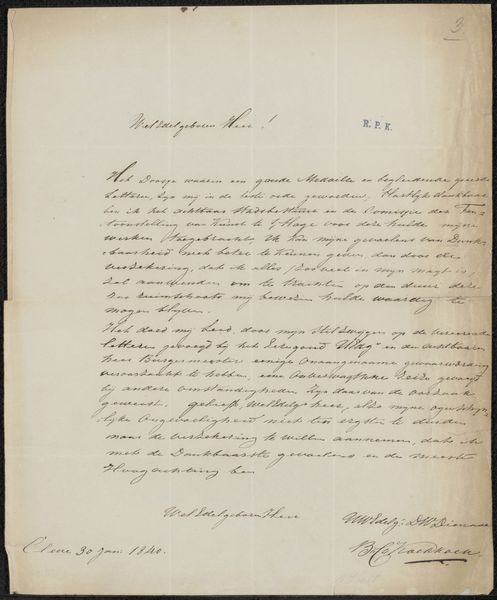
Brief aan G.M.C. Hooft, secretaris van de Commissie van de Tentoonstelling van Levende Meesters in Den Haag Possibly 1841
0:00
0:00
louisjeansomers
Rijksmuseum
drawing, paper, ink
#
drawing
#
dutch-golden-age
#
paper
#
ink
#
calligraphy
Copyright: Rijks Museum: Open Domain
Editor: Here we have “Brief aan G.M.C. Hooft, secretaris van de Commissie van de Tentoonstelling van Levende Meesters in Den Haag,” attributed to Louis Jean Somers, likely from 1841. It's an ink drawing on paper. My initial impression is the formality of the handwriting; it’s very elegant, yet distant, perhaps due to the age of the document. What resonates with you when you look at it? Curator: What I immediately consider is the socio-political context surrounding the production of this letter. A letter such as this, a plea to have one’s work recognized by a formal institution, unveils the artist’s position within the art world hierarchy of the 19th century. Somers, positioning himself relative to the 'Commissie', exposes anxieties around recognition, belonging, and economic stability that impacted artists historically. Do you think this letter reflects those power imbalances? Editor: Definitely, you can sense the urgency in Somers' tone, trying to persuade the committee. I’m curious about the language he uses – does it reveal something about the artistic climate of the time? Curator: Absolutely. Notice the formal tone and polite language. This suggests Somers understood the need to navigate societal norms and expectations. This performance of respectability highlights the gendered and class dynamics that artists often had to negotiate to gain access to artistic circles and exhibition spaces. It shows us that the game hasn’t changed all that much. Editor: I hadn't considered how much is communicated beyond the literal content. This puts a completely new spin on looking at historical documents. Thank you! Curator: Indeed! Thinking about historical art requires understanding its social history, particularly power and equity at play, allows us a much richer engagement with art.
Comments
No comments
Be the first to comment and join the conversation on the ultimate creative platform.
